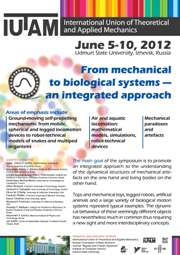Fields of application of the vortex theory are exceedingly wide and diversified, since all of the real flows have vortex nature. To study the formation processes of solitary hydrodynamic structures it is often sufficient to confine oneself to relatively simple models. Thus, in particular, the solution to the problem of motion of discrete vortices in a channel can be used for determination of characteristics of a streamlined body. One of the most trivial vortex structures - vortex pair- turns out to be useful for describing the behavior of the vortices peeling off the edge of an airplane wing. Understanding the interaction between solids and ambient vortices is crucial for analysis of the dynamics of aircrafts and hydrofoil crafts.
The main research avenues of the vortex dynamics section are as follows:
1. Development of new models of vortex motion to provide a more adequate and accurate description of behavior of vortices in perfect fluid. In particular, this is the model of massive vortices, which accounts for the mass of a vortex structure, and the model of distributed vortices, which apart from the classical methods from the theory of dynamical systems require the use of statistics for their treatment.
2. Study of the motion of rigid bodies interacting dynamically with ambient vorticity.
This line of research assumes a theoretical investigation of the solid-vortex interaction in fluid. This is a base for the development and implementation of a body’s self-propulsion mechanism based on the variation of the body’s geometry.
3. Control of the body’s motion in fluid via the change of the geometric and dynamical characteristics of the body. Potentially, this allows development of aquatic vehicles with no external moving parts.
4. Development of experimental arrangements for the study of the dynamics of bodies and vortices in fluid. The apparatus will be used for verification of the theoretical results and pilot tests of prototype vehicles.
5. Design of experimental prototype vehicles which make use of new principles of locomotion in fluid.






